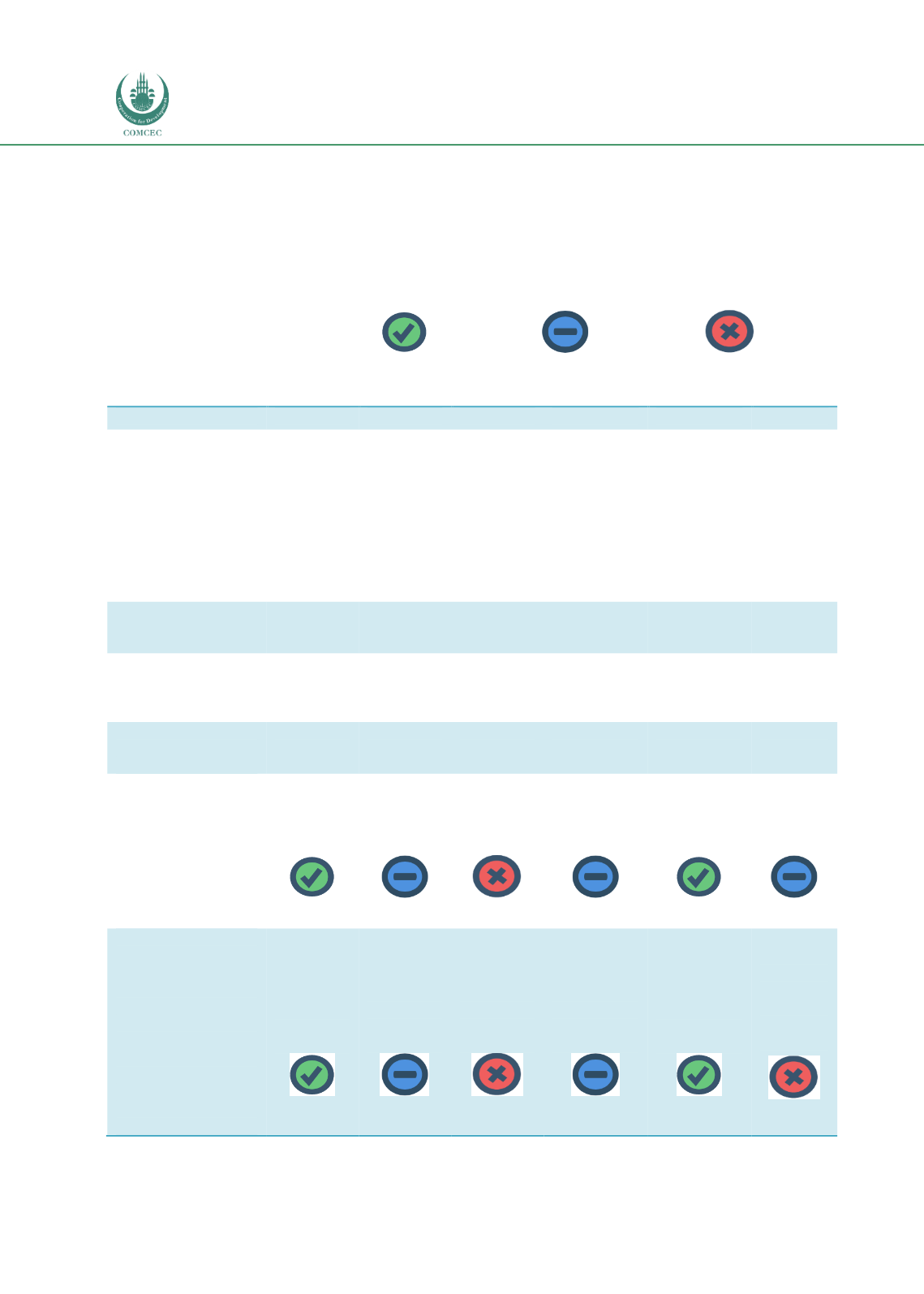

The Role of Sukuk in Islamic Capital Markets
70
4.
CASE STUDIES
4.1
INTRODUCTION: SELECTION CRITERIA AND METHODOLOGY
In determining the selection criteria and methodology, several factors have been analysed. The
development-stage matrix (shown in Table 4.1) has been established to categorise the
countries under review.
High
Moderate
Low
Table 4.1: Development-Stage Matrix for Sukuk
Matured
Developing
Infancy
Malaysia
UAE
Indonesia
Turkey
Hong Kong
Nigeria
Level of
macroeconomic
stability
(ratings of the
country based on
various factors such
as geopolitical
tension, volatility of
local currency, level
of inflation rate)
A- (S&P),
A3
(Moodys),
A- (Fitch),
A
2
(RAM)
AA (S&P),
Aa2
(Moodys),
AA (Fitch)
AA
2
(RAM)
BBB-
(S&P), Baa3
(Moodys),
BBB
(Fitch),
BBB
2
(RAM)
BB (S&P),
Ba1
(Moodys),
BB+ (Fitch)
BBB
3
(RAM)
AA+ (S&P),
Aa2
(Moodys),
AA+ (Fitch)
B (S&P),
B2
(Moodys),
B+ (Fitch)
Percentage of
Muslim population
to total population
61.3%
76%
87.2%
99.8%
1.4%
50%
Percentage of
Islamic banking
assets to total
banking assets
> 20%
> 20%
< 5%
< 5%
< 1%
< 1%
Market share of total
global sukuk
issuance
> 40%
10%-20%
10%-20%
< 10%
< 1%
< 1%
Legal framework:
-
Common law or
civil law
-
Amendments to
local law
-
Clarity of dispute
resolution,
bankruptcy act,
arbitration
Common
law
Civil law,
market
driven
Civil law,
market
driven
Civil law,
with clear
processes
Common
law
Common
law
Regulatory
framework:
-
Strong and single
regulation to
govern bond
market
-
Specific guidelines
on sukuk
-
Regulatory
protection for the
bond market
-
Ratings
Comprehen
sive
framework
and
guidelines
Vulnerable
due to
minimal
framework
Gaps
between
sovereign
and
corporates
Release of
Communique
to govern
sukuk
Global
financial
centre
Under-
developed
















